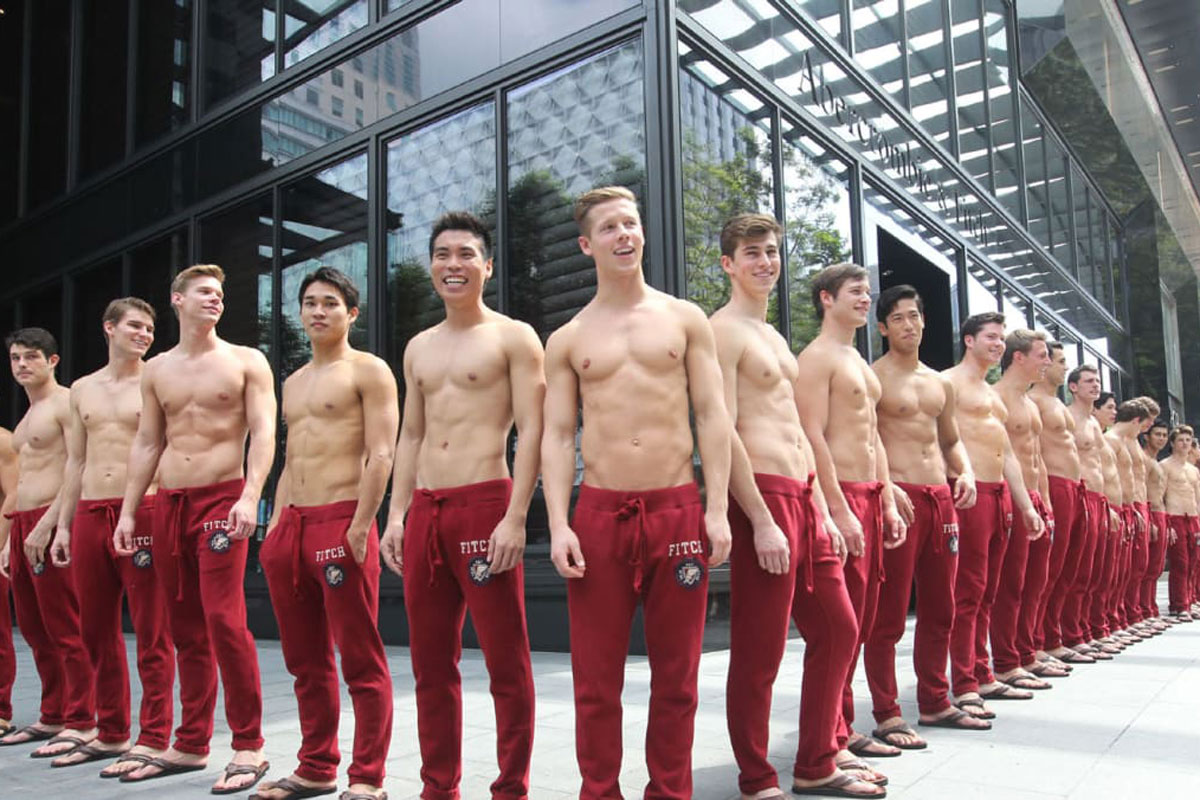
American fashion brand Abercrombie & Fitch built their image on a potent mix of sex and wholesomeness (as a Netflix release put it). But it also has a history of openly exclusive hiring practices – which an upcoming documentary is set to focus on.
First: a little context. Most of us will know Abercrombie and Fitch for using incredibly good looking men and women in its advertising, and for having male models with ridiculous six-packs waiting to greet all customers at the doors of its flagship stores.
Abercrombie & Fitch experienced huge popularity in the late ’90s and early ’00s and created spin-off lifestyle brands Hollister and women’s brand, Gilly Hicks. Now, a Netflix documentary will focus on this popularity, along with the factors that went into it becoming one of the biggest names in global fashion. Primarily, the exclusionary approach to hiring staff.
The documentary, called White Hot: The Rise & Fall of Abercrombie & Fitch will debut on Netflix on April 19th. In the meantime, Netflix recently released a trailer, which you can watch below. The trailer reveals the various people who have contributed to the documentary, which includes former A&F staff and industry insiders.
The main topic the trailer, and documentary focus on, is Abercrombie’s ‘shopping experience’ which was recognised by the “the smell of Abercrombie” (the brand’s signature scent ‘Fierce’ was sprayed around the stores), “nightclub beats”, dark lighting and topless male models at the entrance.
We also hear from former staff who explain how they lost their job based solely on their looks. Former CEO Mike Jeffries (who left the company in 2014) is noted as saying the brand was only for “the good-looking, cool kids,” and added that there were people who didn’t belong in Abercrombie clothing when explaining why you couldn’t find women’s clothing above size 10.
He was even quoted as proudly saying, “Are we exclusionary? Absolutely.”
As People states, the documentary also hears from a teen who was unable to get a job at an Abercrombie store because her hijab violated the store’s “look policy.” This discrimination, along with several other instances of a similar nature, were filed as lawsuits. People adds that Abercrombie “agreed to a $40 million settlements and revised its hiring policies,” in response to a lawsuit that claimed the brand discriminated against African Americans, Latinos, Asian Americans and women in general.
Abercrombie has responded directly to the upcoming documentary, taking to Instagram to release a statement.
“In the spirit of transparency, we want to directly acknowledge the news of an upcoming documentary that will feature Abercrombie & Fitch and focus on an era that took place under previous leadership,” it starts.
“While the problematic elements of that era have already been subject to wide and valid criticism over the years, we want to be clear that they are actions, behaviours and decisions that would not be permitted or tolerated at the company now.”
“As we’ve evolved, we’ve felt the love from this community. We are grateful for the support you have given us as we’ve taken intentional steps to be inclusive and welcoming to everyone.”
“Thank you for giving us the chance to show you who Abercrombie is today, and for being a part of who we will be tomorrow. We know the work is never done and remain committed to continually creating a company of which we can all be proud.”
The post has received much praise, with comments including:
“Abercrombie had the greatest glow up of all time and I STAND by that,” “the evolution of Abercrombie under the new leadership is extremely admirable. That’s how you turn a company around!” and “As a former manger / employee who swore I’d never work for the company again, I am SO proud of the steps Abercrombie has taken to become more inclusive, accepting, loving – and let’s face it – just overall BETTER! The clothes are better, the approach is better, the mentality is better. Thanks for doing better.”
Indeed, one look at the Abercrombie website today and things have most certainly changed, but is it all a bit too late?
You’re greeted with a large banner on the home page, reading “This is Abercrombie Today. Today – and every day – we’re leading with purpose, championing inclusivity and creating a sense of belonging.”
You’ll also see an array of images showing men and women of all races and sizes, and with virtually no shirtless male jocks in the process. The style and aesthetic of clothing has changed too. The company’s signature skinny jeans may remain, but the rest of the collections appear to be appealing to a more mature male audience, as opposed to the senior high school students in North America.
Abercrombie is now most definitely a more inclusive brand that has the potential for greater appeal. But with such a troubled past, can it ever fully recover?
Read Next
The post ‘We’ve Evolved’: Abercrombie & Fitch Respond To Damning Netflix Documentary appeared first on DMARGE.


0 Commentaires